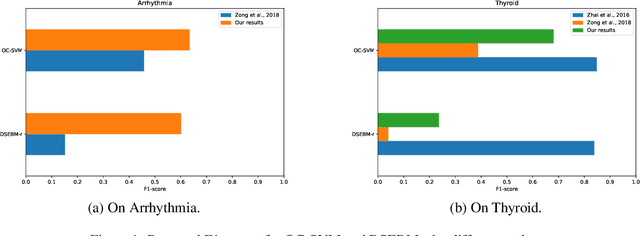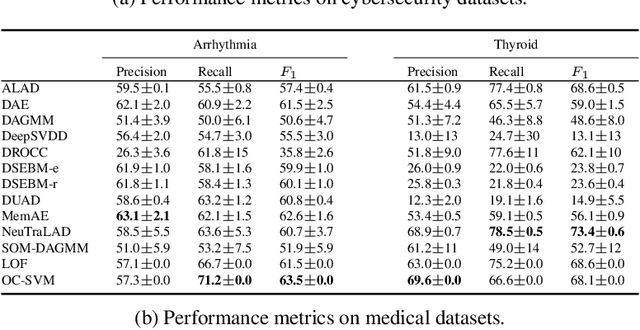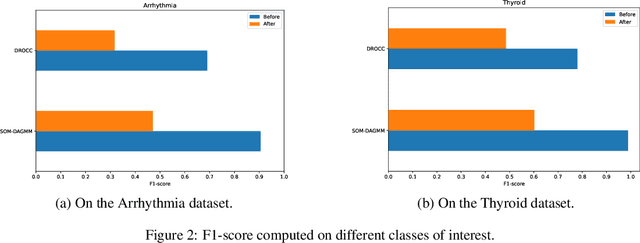Pierre-Martin Tardif
Preventing Jailbreak Prompts as Malicious Tools for Cybercriminals: A Cyber Defense Perspective
Nov 25, 2024Abstract:Jailbreak prompts pose a significant threat in AI and cybersecurity, as they are crafted to bypass ethical safeguards in large language models, potentially enabling misuse by cybercriminals. This paper analyzes jailbreak prompts from a cyber defense perspective, exploring techniques like prompt injection and context manipulation that allow harmful content generation, content filter evasion, and sensitive information extraction. We assess the impact of successful jailbreaks, from misinformation and automated social engineering to hazardous content creation, including bioweapons and explosives. To address these threats, we propose strategies involving advanced prompt analysis, dynamic safety protocols, and continuous model fine-tuning to strengthen AI resilience. Additionally, we highlight the need for collaboration among AI researchers, cybersecurity experts, and policymakers to set standards for protecting AI systems. Through case studies, we illustrate these cyber defense approaches, promoting responsible AI practices to maintain system integrity and public trust. \textbf{\color{red}Warning: This paper contains content which the reader may find offensive.}
ASTD Patterns for Integrated Continuous Anomaly Detection In Data Logs
Nov 10, 2024Abstract:This paper investigates the use of the ASTD language for ensemble anomaly detection in data logs. It uses a sliding window technique for continuous learning in data streams, coupled with updating learning models upon the completion of each window to maintain accurate detection and align with current data trends. It proposes ASTD patterns for combining learning models, especially in the context of unsupervised learning, which is commonly used for data streams. To facilitate this, a new ASTD operator is proposed, the Quantified Flow, which enables the seamless combination of learning models while ensuring that the specification remains concise. Our contribution is a specification pattern, highlighting the capacity of ASTDs to abstract and modularize anomaly detection systems. The ASTD language provides a unique approach to develop data flow anomaly detection systems, grounded in the combination of processes through the graphical representation of the language operators. This simplifies the design task for developers, who can focus primarily on defining the functional operations that constitute the system.
Impact of Inaccurate Contamination Ratio on Robust Unsupervised Anomaly Detection
Aug 14, 2024Abstract:Training data sets intended for unsupervised anomaly detection, typically presumed to be anomaly-free, often contain anomalies (or contamination), a challenge that significantly undermines model performance. Most robust unsupervised anomaly detection models rely on contamination ratio information to tackle contamination. However, in reality, contamination ratio may be inaccurate. We investigate on the impact of inaccurate contamination ratio information in robust unsupervised anomaly detection. We verify whether they are resilient to misinformed contamination ratios. Our investigation on 6 benchmark data sets reveals that such models are not adversely affected by exposure to misinformation. In fact, they can exhibit improved performance when provided with such inaccurate contamination ratios.
Deep Learning for Network Anomaly Detection under Data Contamination: Evaluating Robustness and Mitigating Performance Degradation
Jul 11, 2024Abstract:Deep learning (DL) has emerged as a crucial tool in network anomaly detection (NAD) for cybersecurity. While DL models for anomaly detection excel at extracting features and learning patterns from data, they are vulnerable to data contamination -- the inadvertent inclusion of attack-related data in training sets presumed benign. This study evaluates the robustness of six unsupervised DL algorithms against data contamination using our proposed evaluation protocol. Results demonstrate significant performance degradation in state-of-the-art anomaly detection algorithms when exposed to contaminated data, highlighting the critical need for self-protection mechanisms in DL-based NAD models. To mitigate this vulnerability, we propose an enhanced auto-encoder with a constrained latent representation, allowing normal data to cluster more densely around a learnable center in the latent space. Our evaluation reveals that this approach exhibits improved resistance to data contamination compared to existing methods, offering a promising direction for more robust NAD systems.
Psychological Profiling in Cybersecurity: A Look at LLMs and Psycholinguistic Features
Jun 26, 2024
Abstract:The increasing sophistication of cyber threats necessitates innovative approaches to cybersecurity. In this paper, we explore the potential of psychological profiling techniques, particularly focusing on the utilization of Large Language Models (LLMs) and psycholinguistic features. We investigate the intersection of psychology and cybersecurity, discussing how LLMs can be employed to analyze textual data for identifying psychological traits of threat actors. We explore the incorporation of psycholinguistic features, such as linguistic patterns and emotional cues, into cybersecurity frameworks. \iffalse Through case studies and experiments, we discuss the effectiveness of these methods in enhancing threat detection and mitigation strategies.\fi Our research underscores the importance of integrating psychological perspectives into cybersecurity practices to bolster defense mechanisms against evolving threats.
Characterizing Financial Market Coverage using Artificial Intelligence
Feb 07, 2023



Abstract:This paper scrutinizes a database of over 4900 YouTube videos to characterize financial market coverage. Financial market coverage generates a large number of videos. Therefore, watching these videos to derive actionable insights could be challenging and complex. In this paper, we leverage Whisper, a speech-to-text model from OpenAI, to generate a text corpus of market coverage videos from Bloomberg and Yahoo Finance. We employ natural language processing to extract insights regarding language use from the market coverage. Moreover, we examine the prominent presence of trending topics and their evolution over time, and the impacts that some individuals and organizations have on the financial market. Our characterization highlights the dynamics of the financial market coverage and provides valuable insights reflecting broad discussions regarding recent financial events and the world economy.
A Revealing Large-Scale Evaluation of Unsupervised Anomaly Detection Algorithms
Apr 21, 2022



Abstract:Anomaly detection has many applications ranging from bank-fraud detection and cyber-threat detection to equipment maintenance and health monitoring. However, choosing a suitable algorithm for a given application remains a challenging design decision, often informed by the literature on anomaly detection algorithms. We extensively reviewed twelve of the most popular unsupervised anomaly detection methods. We observed that, so far, they have been compared using inconsistent protocols - the choice of the class of interest or the positive class, the split of training and test data, and the choice of hyperparameters - leading to ambiguous evaluations. This observation led us to define a coherent evaluation protocol which we then used to produce an updated and more precise picture of the relative performance of the twelve methods on five widely used tabular datasets. While our evaluation cannot pinpoint a method that outperforms all the others on all datasets, it identifies those that stand out and revise misconceived knowledge about their relative performances.
 Add to Chrome
Add to Chrome Add to Firefox
Add to Firefox Add to Edge
Add to Edge